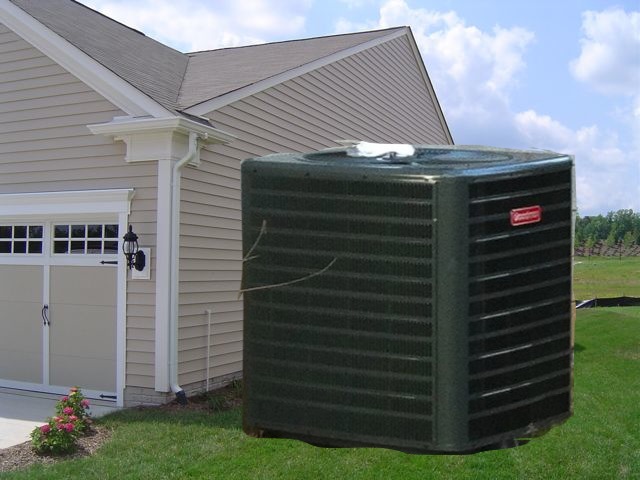
Image Credit: Energy Vanguard
Image Credit: Energy Vanguard This "motor on/off" data logger (the Hobo UX90-004 from Onset) helped me document how oversized the air conditioner in my condo is.
Image Credit: Energy Vanguard The data logger deployed on the blower motor in our furnace, which is what moves the air that our air conditioner cools.
Image Credit: Energy Vanguard Outdoor temperature and hourly runtime data. The on/off data here are binned to show the total amount of time the air conditioner spent on and off in each one-hour period.
Image Credit: Energy Vanguard On/off data showing all cycles in the 24-hour period. The air conditioner started and ended the day (August 29, 2014) turned off and went through 35 on/off cycles during the day.
Image Credit: Energy Vanguard
Back in 2009, I had a new air conditioner installed our condo. The previous one was an ancient 25 years old and barely limping along. It wasn’t cooling much, and the summer electric bills had risen.
So, I did a Manual J load calculation on our condo to find out what size we should replace it with. I wanted to install one that wouldn’t be too big so it would have long runtimes and keep our place cool and dry. Well, I put one of my new data loggers to use this summer to find out if I succeeded. The (doctored) photo below, which is not our condo, might give you a hint how well I did.
Air conditioner runtime on a hot day
Once you have an air conditioner installed, it’s not hard to tell if it’s oversized. All you need to do is time how long it runs on a hot day. If it runs a lot and still keeps the place cool, you’re in good shape. If it runs only a few minutes at a time and spends the majority of the time turned off, your AC is oversized.
In the world of air conditioning, “hot day” has a specific definition. There’s this thing called the summer design temperature, which is the temperature that your location goes above only 1% of the time. Out of the 8,760 hours in a year, the summer design temperature is the temperature exceeded only 87.6 hours, on average.
Your air conditioner should be sized to run almost continuously at the design temperature. That’s the idea behind a Manual J heating and cooling load calculation, a protocol developed by the Air Conditioning Contractors of America (ACCA). But there’s some slack built into it, so you don’t need to worry about being hot on a day when the temperature is a few degrees over your design temperature. If you’re getting runtimes of 45 minutes or more per hour when it’s near your design temperature, your AC is probably doing a pretty good job.
How much capacity did we need?
As I mentioned, I did a load calculation on our condo before I got the new AC. The result was that we needed about 1.6 tons of air conditioning capacity. As I wrote in an earlier article about how to find out if your AC is oversized, I wanted to go with the 1.5-ton AC, but I chickened out and put in a 2-ton unit instead.
Our place is about 1,500 square feet, so that’s 750 square feet per ton. The standard rule of thumb that a lot of contractors still use around here is to install one ton of AC capacity for each 500-600 square feet of conditioned floor area. Since our place is old and leaky (yeah, yeah, cobbler’s kids and all that), 750 square feet per ton is pretty good. But, was it good enough?
Measuring our air conditioner runtime
Well, this summer I got finally put a data logger on our air conditioner to see just how oversized it really is. I previously wrote about using a stopwatch to determine that our AC was oversized because the on-periods weren’t long. I measured about 9-10 minutes max on a hot afternoon shortly after I got the new AC. The data logger I used in my latest experiment was the Hobo UX90-004 from Onset.
All you do is stick it on a motor (it’s held there by magnets) and it tells you when the motor is on and when it’s off. I opened up the furnace and stuck it on the blower motor, as shown in the photo below. The display shows how many total hours and minutes the motor ran while the logger was deployed, but you get a lot more detail when you download the data.
Show me the data!
After sorting through a few months of data, I settled on one day that seemed to be perfect for illustrating how well sized our air conditioner is. That day was last Friday August 29, and I looked at the 24-hour period from midnight to midnight.
I also made sure to keep the indoor temperature constant. The thermostat was at 75°F for nearly the whole day. The only time it wasn’t was in the early morning morning when I lowered it to 74°F.
You can see the data below. The first graph shows the average temperature for each hour of the day (green), the amount of time the AC was off during each hour (red), and the amount of time the AC was on during each hour (blue). (The temperature data are from Weather Underground.)
Our design temperature in Atlanta is 92°F. Last Friday, we had a good 5 hours when the temperature stayed right there, around 91-92°F. We had another couple of hours above 89°F, so it was perfect for seeing if our AC is oversized.
The first thing to notice is that there was only one hour in the whole day when the AC was on more than it was off. From 6 p.m. to 7 p.m., the AC was on for 31 minutes and off for 29.
Note that the first graph isn’t showing the actual on/off cycles. I binned the data so that each red column shows the number of minutes in its hour when the AC did not run, and each blue column shows the number of minutes the AC was on in an hour. When it got hot in the afternoon, there were about three cycles per hour.
Over the whole 24-hour period, the air conditioner went through 35 cycles, as shown in the second graph. It started the day turned off and ended the day turned off and came on 35 times in between. (The red columns at the beginning and end don’t show the whole off periods. The first one shows only 29 of 53 minutes off, and the last shows only 4 of 63 minutes turned off.)
A few interesting numbers
I’ve been studying these data for a while now, and there’s a lot to see here. Here are some of the numbers that jumped out at me:
- Maximum on time: 14.8 minutes
- Minimum on time: 7.2 minutes
- Maximum off time: 64 minutes
- Total on time: 315 out of 1,440 minutes (22%)
- Mean on time per hour: 13.1 minutes
- Mean on time per cycle: 9.0 minutes
The takeaways
Some of the main lessons we can learn from these data are:
- I wouldn’t have had any trouble with the 1.5-ton air conditioner.
- There’s a time lag between when its hottest outdoors and when we have the highest cooling load indoors.
- There’s a huge difference between the longest and shortest off periods (54 minutes) but not so much with the on periods (7.6 minutes).
- Even with an old, leaky condo, the 500-600 square feet per ton rule of thumb results in greatly oversized air conditioners.
- I didn’t do a good job with that Manual J.
- At 9 minutes per cycle, our air conditioner isn’t doing as good a job at dehumidifying as it could. (I’ve got some really interesting data about humidity coming up soon, too. Stay tuned!)
Rick Chitwood’s favorite strategy
I got an email from Rick Chitwood a couple of weeks ago in which he mentioned how he likes to do air conditioner sizing and installation. Here’s what he wrote:
- Use Manual J to estimate the size of AC required;
- Use HOBO’s to monitor run times (at design temperatures) and indoor temperature – so you know if you did Manual J correctly.
Of course, if you get the Manual J wrong, as I did, using data loggers doesn’t change that. It does help you figure out how to get the load calculations right and make sure you do better on the next job, though.
There you have it. The data don’t lie. If you want to find out how oversized your air conditioners are, just get out your stopwatch. If you want to get a better picture of what’s happening, get yourself a data logger.
Allison Bailes of Decatur, Georgia, is a speaker, writer, energy consultant, RESNET-certified trainer, and the author of the Energy Vanguard Blog. Check out his in-depth course, Mastering Building Science at Heatspring Learning Institute, and follow him on Twitter at @EnergyVanguard.
Weekly Newsletter
Get building science and energy efficiency advice, plus special offers, in your inbox.





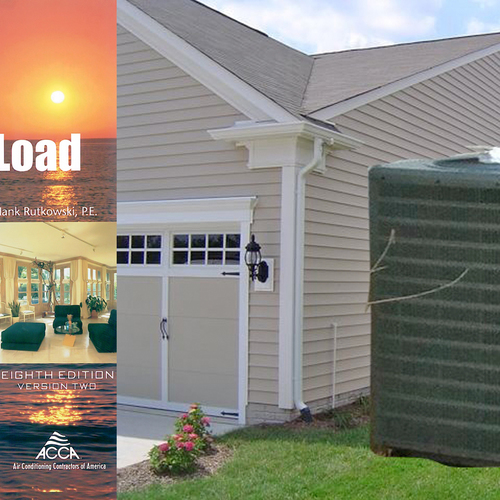
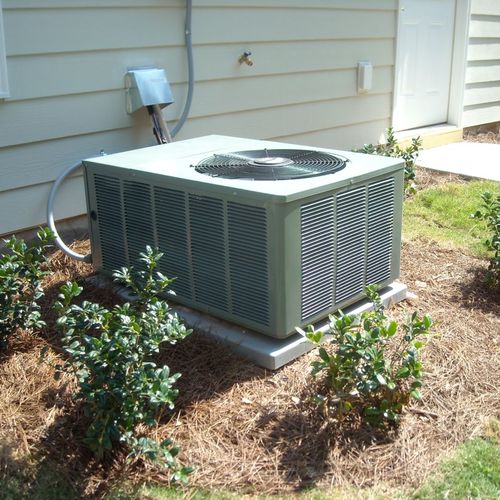
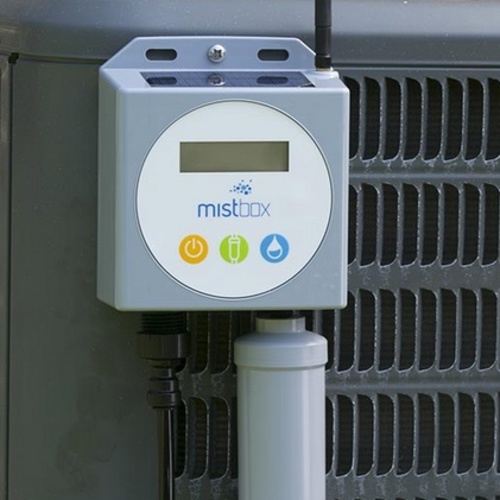
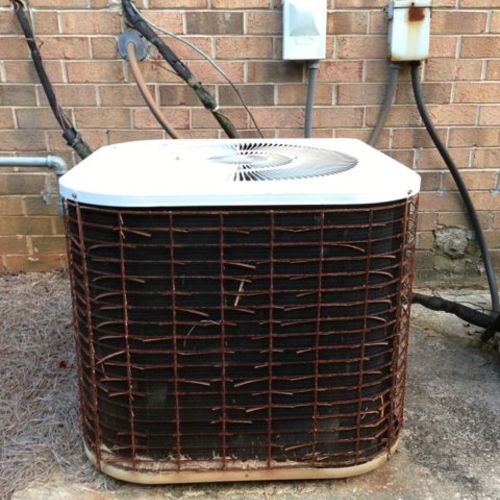






13 Comments
Response to Allison Bailes
Allison,
Thanks for (bravely) sharing your data. The number of U.S. air conditioners that run flat out on the hottest day of the year is a very small number.
Did you ever consider installing a ductless minisplit?
Mini-splits
Martin, yes, I did consider it but decided against it because it would have been a difficult retrofit for us and much more expensive than simply replacing the old AC with another of the same type. Although Carter Scott can build two-story homes in Massachusetts with only 2 ductless heads, that wouldn't have worked for us. Our enclosure isn't so great (although it performs much better than I thought it would!) and air flow throughout the house is critical in a mixed humid climate.
same with other HVAC equipment?
Great article. I'm curious how well your conclusions would extrapolate to other HVAC equipment. Furnaces? How about minisplits? They are capable of monitoring the load and adjusting their output accordingly, but I assume oversized units must still carry an energy penalty. Is the same true at the other end, with an undersized minisplit running flat out continuously, without attaining its setpoint?
Also curious to know how your Manual J calculation didn't match real life. How much confidence should we homeowners have in that tool (and the people who wield it?)
It's great to have hard data to compare with manufacturer's claims and design software.
Sharing that heat loads can drive sizing
I know that the general rule of thumb tends to be to size your equipment for your cooling loads but if doing a similar swap with heat pumps, I recently learned that the size of the equipment for some homes is driven more by the heating loads than the cooling. My very old, uninsulated house with a walk up attic, for instance, is one such property. Roughly 6-7 tons for cooling but 8-10 tons for heating, with heat pumps that is.
Similar argument for heating system oversizing?
Would the same argument hold for a heating system, eg. a natural gas furnace that uses a blower motor? If a furnace is sized appropriately should I see it be mostly-on during the coldest part of the winter?
You see, I live in a 1998 townhouse with an original, rarely-serviced gas furnace and electric A/C system. I've been planning to replace them both soon with more efficient models. But now I'm tempted to buy a datalogger and see what happens over the next 9-12 months, and see how badly oversized it is.
Sorry if this is an elementary question. I'm just a computer geek with delusions of being a building energy efficiency guy. So I'm still very early in the learning process. Now to go see what I can find out about these data loggers, and if it's possible to extract data from them in Linux. 'Cause I'm *that* kind of a computer geek. :-)
That's right (response to Lloyd #5)
Heating equipment should also be running at nearly a 100% duty cycle at the 99% outside design temperature.
With hot air furnaces there isn't an appreciable hit in efficiency from oversizing, but there can be a comfort hit due to temperature overshoots, higher air flow & noise, etc. With hydronic (pumped hot water) systems oversizing by more than 1.5-2x pushes the as-used efficiency toward a short-cycling efficiency cliff (especially in multi-zoned systems.)
Oversized heating
With replacement furnaces with variable speed blowers, blower energy generally increases as size increases. Actually blower energy often increases even if the size remains the same. There are lots of PSC motors pushing around 300 cfm/ton, and the VS blowers replacing them are often set at >400 cfm/ton.
Over-sizing seems more common to furnaces than air conditioners, which is really saying something. Most Manual D's in my area use cooling airflow, because these require the largest air volume. However, most real world furnace-AC combinations require heating airflow well in excess of cooling, even when set on the highest allowable temperature rise. So that's sort of weird.
variable speed?
Does the data logger compensate for variable speed systems? I just had a new heat pump installed about 6 months ago (Bryant Evolution Extreme), and we designed it for the winter more so than the summer. But it is my general understanding that over-sizing is now "ok" with variable speed compressor technology.
Oversizing not really OK, even with variable speed
While units like the Evolution Extreme or Carrier GreenSpeed et al are variable speed, they do NOT have an infinite turn-down ratio. If the turn down ratio is 3:1 and you've oversized it 3x, it will effectively NEVER modulate, and will cycle on/off with lots of standby idling power use. So, even though it's efficiency while running at minimum modulation is very good, the idling standby losses take away from the average efficiency. By oversizing a modulating unit by a large factor you end up re-inventing the 1 speed unit (that one speed being "low"), but it's an EXPENSIVE 1-speed.
Ideally you would size the thing such that it is somewhere in the middle of it's modulating range at the average seasonal load, and still have enough capacity at the 1% & 99% design conditions to cover the peak loads. Oversizing by more than 50% for the peak loads will often leave the thing cycling at the average load.
True loads are usually going to be below that calculated in a Manual-J, and it's better to err toward undersizing rather than oversizing. Allison's case is a perfect example of this- the calculation came out at 1.6 tons, the actual loads based on the maximum duty cycle with the 2- ton unit indicate a peak load of something around 1.1 tons. Had he gone with the 1.5 ton unit there would have been ample capacity to spare, and even a 1-ton unit would not have left him roast. If he had gone with a variable speed 2 ton unit it would modulate only on the hottest days, but barely at all during the shoulder seasons. Had he gone with a variable speed 3-4 ton it would effectively be a one-speed.
Modulation
Dana - I completely agree with you, but I think that's just the tip of the iceberg. Evo Extreme/GreenSpeed (same unit) have outstanding modulation - basically unmatched. Most of the high-end equipment is 2 stage, with first stage at ~60%-70%. Furthermore, most of this equipment is only available in full ton increments. I would love to see a field study, but would be willing to bet that the vast majority of folks with 2 stage equipment would have been better off with single stage equipment sized at or smaller than their first stage.
Be sparing in praise of Green Speed modulation
The model lineup consists of just two distinct systems, one configured for 2 and 3 tons and the other configured for 4 and 5 tons. The 2 and 4 are factory detuned variants of the 3 and 5. In other words there is no extra turndown gained by going with a 2 or 4; they don't go any lower than the 3 and 5 respectively.
With respect to Alison's situation, conventional split systems are not available in capacities less than 1.5 tons, so there was no "1 ton" option. Ducted minisplits are available in one ton variants with 4:1 turndown, but their air handlers are low static; likely incapable of working with conventional (crappy) ductwork.
Air Conditioner, Cooling Load, HVAC oversized
Allison,
A CAVERNOUS CONDENSER BOX (your photo)
- I'm still laughing. An entertainer with a physics PHD. Delightful.
.
ROLE OF THE CONTROL INSTRUMENTATION
- It sounds like your thermostat behaves like ours. If the temp rises 1F above set point, the a/c comes on.
- The sensitivity of the controller counts. If it were more sensitive, it could come on if the temp rises say 0.1F. Or, if less sensitive, it could come on if temp rises 2F. Either way, it would affect the graph of the on/off cycles.
- Similarly, a programmable thermostat could make a difference and depends on the homeowner tolerance for variation. In our case, the house varies from about 75 to 79F on hot summer days. This is comfortable for us as long as it's low humidity and as long as it's cooler at night.
- We now use our programmable thermostat. It's a venerable Honeywell Chronotherm III. The a/c now is fully inactive from 3am to 7pm. From 7pm to 2am the a/c will run if needed to return to a 76F overnight setting. Most of the serious work is done from 10 pm to 2 am when the electricity rates are lower here in the Chicago area. The run time is about 5 - 10 minutes (estimate) unless we introduce a manual input to say 74 - 75F when tomorrow is likely to be especially hot and humid. In that case, the a/c runs are longer but fewer (15 - 20 minutes estimated).
.
YOU THINK YOU'RE FAT ???
- We have a 2 story house and two a/c units. It comes out to 628 ft2/ton. That's what we had in 2001 and there were no issues with comfort and both a/c units operated.
- We then made a hobby of reducing our utility bills. Now only the upper a/c runs. The lower unit runs only if I force it to in order to keep it viable. Consequently, we are now at 1257 ft2/ton. None of this counts the mostly finished basement. If included, this would put us at 1886 ft2/ton. The one a/c unit handles the load just fine and there are no distribution problems. I like having a spare but ...
- So we have TWO cavernous a/c condenser boxes outside and only use part of one. Fat. QED.
.
SUMMER COOLING LOAD
- Seasonal load: Warm = June to Aug (Ext + Int); Mild = Apr, May, Sept, Oct (Internal only)
Year 2001: Warm Mos = 11 kwh/dd, Mild Mos = 2.8 kwh/dd, Seasonal Difference = 8..2 kwh/dd.
Year 2013 Warm Mos = 3 kwh/dd, Mild Mos = 2 kwh/dd, Seasonal Difference = 1 kwh/dd
- In mild weather, virtually all of the kwh usage is internal (appliances et al). There may be degree days occurring but neither the furnace nor a/c operate. We've cut our internal usage by 29%.
- Similarly, the external portion used to be 75% of summer electricity use. Now it is 1/3. External cooling load has been cut by about 88% by these measures.
.
DESIRE FOR ENERGY EFFICIENCY
- When I read about a/c sizing, it seems to hinge on a) The Manual J method, b) Achieving uniform dehumidification, and c) Just large enough to run a steady 100% on the hottest days.
- I'd like to see a statement on energy efficiency as item "d)". Overt, not imbedded.
- When I see long hours of operation to keep the a/c running and smoothly reduce the humidity, I worry that the blower fan is running excessively and chewing up electricity with no real benefit. As little as our blower runs, it and the natural drafts leave the house quite comfortable to us.
.
WHICH IS MORE IMPORTANT? .....
- A recent posting considered whether it was more important to seal or to insulate. (A topic only the angels could consider).
- Now I'm wondering (rhetorically): which is most important and economically correct? To correctly size the a/c and optimize its SEER score, or to minimize the cooling load so as to achieve best practices ?
- I'd say, go back to the table above. Those numbers occurred with no changes in a/c hardware.
- If not, we're almost certain to specify and buy oversized a/c. More fat.
- Related (rhetorical): how does Passive House cooling load compare to other benchmark homes? To best practices?
- Maybe it's a possible future topic?
Thank You- Good Tip
Thanks for sharing the information.
Scotty
Log in or create an account to post a comment.
Sign up Log in